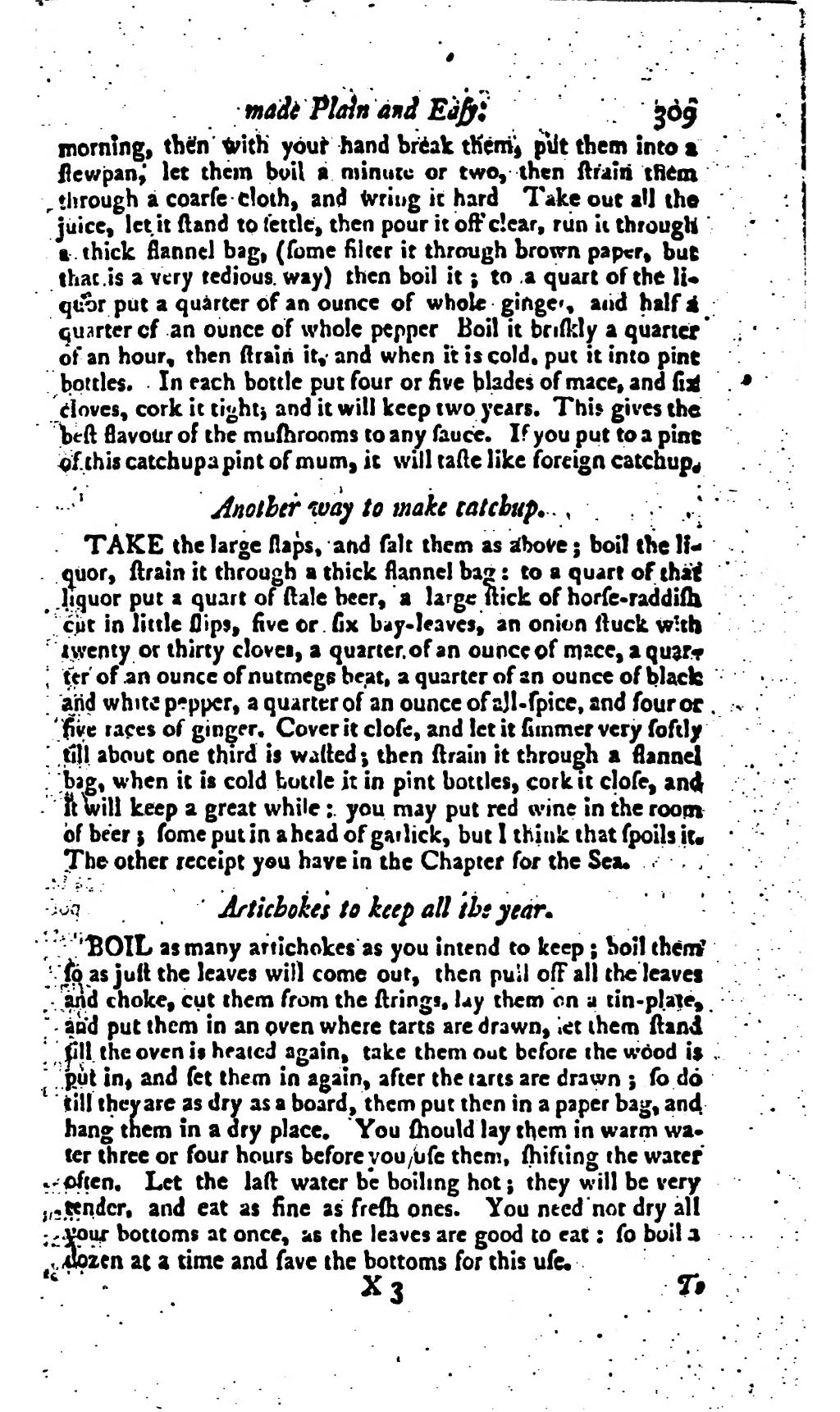morning, then with your hand break them, put them in a stewpan, let them boil a minute or two, then strain them through a coarse cloth, and wring it hard. Take out all the juice, let it stand to settle, then pour it off clear, run it through a thick flannel bag, (some filter it through brown paper, but that is a very tedious way) then boil it; to a quart of the liquor put a quarter of an ounce of whole ginger, and half a quarter of an ounce of whole pepper. Boil it briskly a quarter of an hour, then strain it, and when it is cold, put it into pint bottles. In each bottle put four or five blades of mace, and six cloves, cork it tight, and it will keep two years. This gives the best flavour of the mushrooms to any sauce. If you put to a pint of this catchup a pint of mum, it will taste like a foreign catchup.
Another way to make catchup.
TAKE the large flaps, and salt them as above; boil the liquor, strain it throug ha thick flannel bag: to a quart of that liquor put a quart of stale beer, a large stick of horse-raddish cut in little slips, five or six bay-leaves, an onion stuck with twenty or thirty cloves, a quarter of an ounce of black and white pepper, a quarter of an ounce of mace, a quarter of an ounce of nutmegs beat, a quarter of an ounce of black and white pepper, a quarter of an ounce of all-spice, and four or five races of ginger. Cover it close, and let it simmer very softly till about one third is wasted; then strain it through a flannel bag, when it is cold bottle it in pint bottles, cork it close, and it will keep a great while: you may put red wine in the room of beer; some put in a head of garlick, but I think that spoils it. The other receipt you have in the Chapter for the Sea.
Artichokes to keep all the year.
BOIL as many articholes as you intend to keep; boil hem so as just the leaves will come out, then pull off the leaves and choke, cut them from the strings, lay them on a tin-plate, and put them in an oven where tarts are drawn, let them stand till the oven is heated again, take them out before the wood is put in, and set them in again, after the tarts are drawn; so do till they are as dry as a board, then put them in a paper bag, and hang them in a dry place. You should lay them in warm water three or four hours before you use them, shifting the water often. Let the last water be boiling hot; they will be very tender, and eat as fine as fresh ones. You need not dry all your bottoms at once, as the leaves are good to eat: so boil a dozen at a time and save the bottoms for this use.
